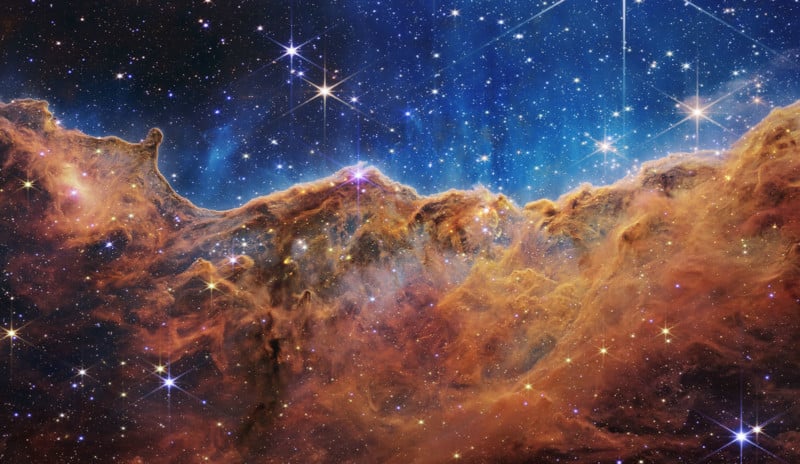The James Webb Space Telescope (JWST) team has translated some of the telescope’s first photos into music. Called sonification, the goal is to make the JWST’s image and data understandable through sound to help listeners create their own mental images.
Sonification is the process of using non-speech audio to convey visual information. The Webb team, in conjunction with NASA’s Universe of Learning, worked with musicians who translated a few of the telescope’s photos into complex soundscapes by assigning unique notes to different regions of the images. For example, the most recent sonification translates the cosmic cliffs of the carina nebula into music.

“Sonifications support blind and low-vision listeners first, but are designed to be captivating to anyone who tunes in. This sonification, which scans the image from left to right, was adapted to a video to allow sighted viewers to watch as a vertical line moves across the frame,” the Webb team says.
“The soundtrack is vibrant and full, representing the detail in this gigantic, gaseous cavity that has the appearance of a mountain range. The Carina Nebula is a large cloud of gas and dust where stars are forming or have already formed.”
NASA explains that the colors in the images were mapped to pitches of sound; in short, frequencies of light were converted directly into frequencies of sound.
“Near-infrared light is represented by a higher range of frequencies at the beginning of the track. Mid-way through, the notes change, becoming lower overall to reflect that mid-infrared includes longer wavelengths of light,” the scientists explain.
“These compositions provide a different way to experience the detailed information in Webb’s first data. Similar to how written descriptions are unique translations of visual images, sonifications also translate the visual images by encoding information, like color, brightness, star locations, or water absorption signatures, as sounds,” Quyen Hart, a senior education and outreach scientist at the Space Telescope Science Institute in Baltimore, Maryland, says.
“Our teams are committed to ensuring astronomy is accessible to all.”
NASA says that there are profound benefits to these adaptations and the hope is that sonifications of Webb research data will help more listeners feel a stronger connection to the universe.
“When I first heard a sonification, it struck me in a visceral, emotional way that I imagine sighted people experience when they look up at the night sky,” Christine Malec, a member of the blind and low vision community who also supports this project, says.
Multiple Webb photos have been converted into sonifications, and it is likely that more will be produced in the future. These and other videos related to the JWST can be found on the telescope’s YouTube Channel.
Author: Jaron Schneider
Source: Petapixel



